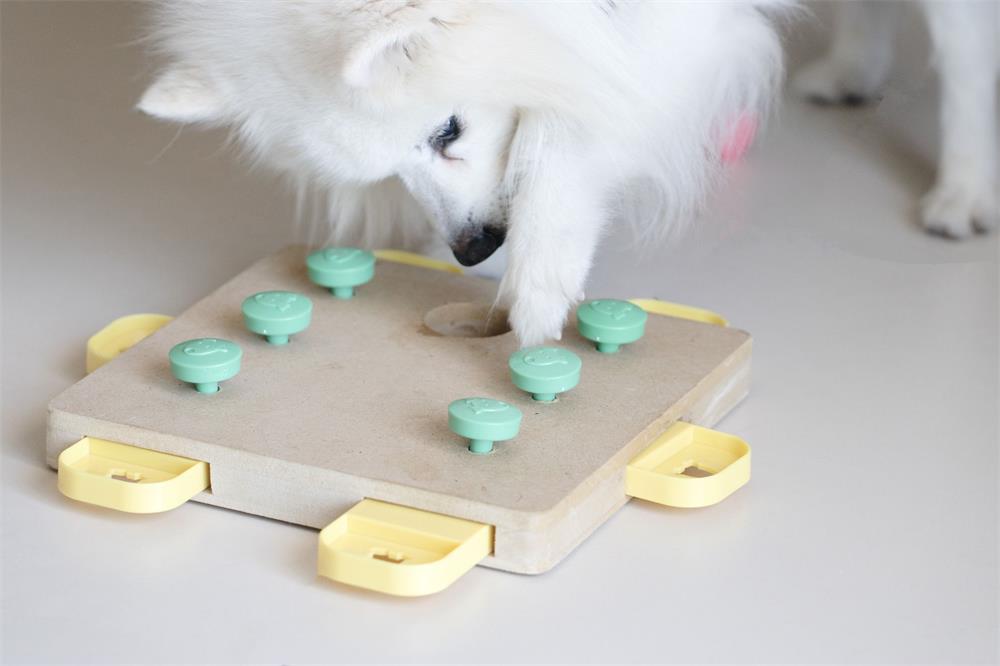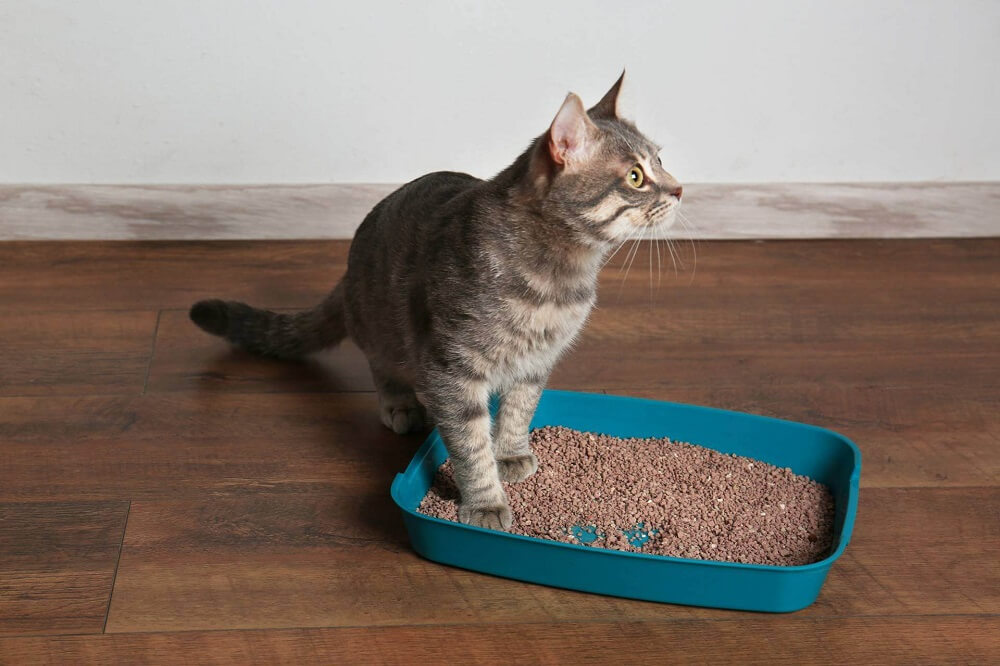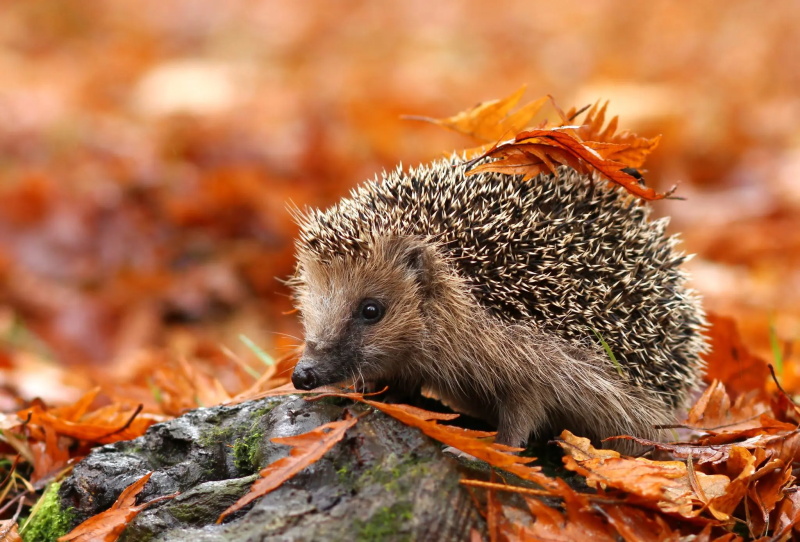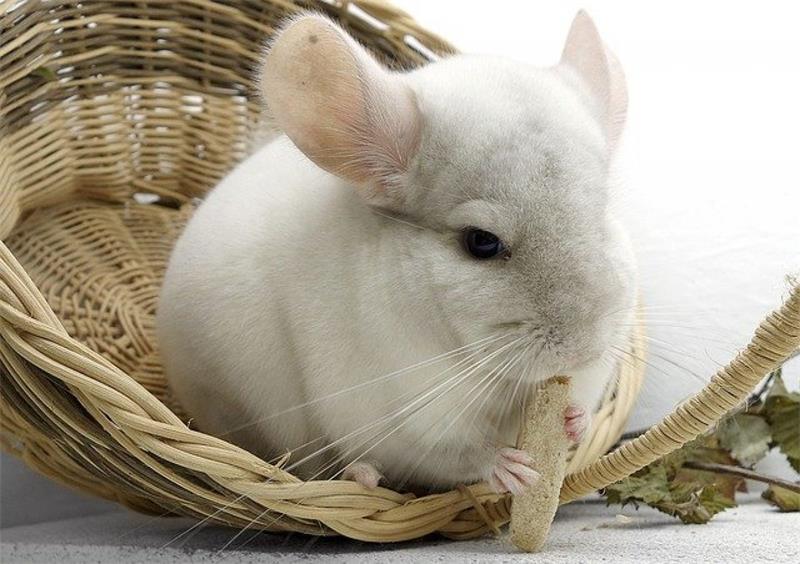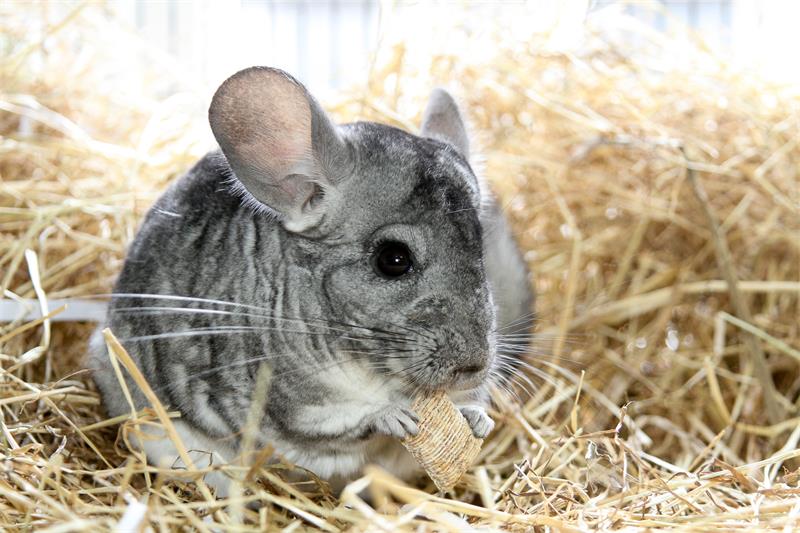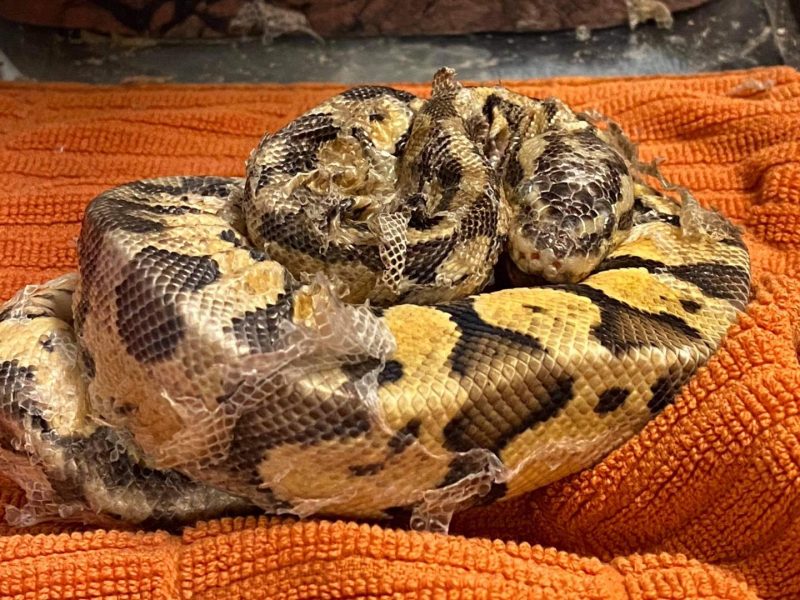
Table of Contents
Ball pythons are one of the most popular pet snakes in the world, and for good reason. They are docile, easy to care for, and come in a variety of beautiful colors and patterns. But like all snakes, ball pythons need to shed their skin regularly as they grow and renew their outer layer. This process is natural and normal, but it can also cause some challenges and concerns for both the snake and the owner.
In this article, we will explain everything you need to know about ball python shedding, including:
- Why do ball pythons shed their skin?
- How often do ball pythons shed their skin?
- How can you tell when your ball python is about to shed?
- How can you help your ball python have a successful shed?
- What are some common shedding problems and how can you solve them?
By the end of this article, you will have a better understanding of the shedding process and how to provide the best care for your ball python during this time.
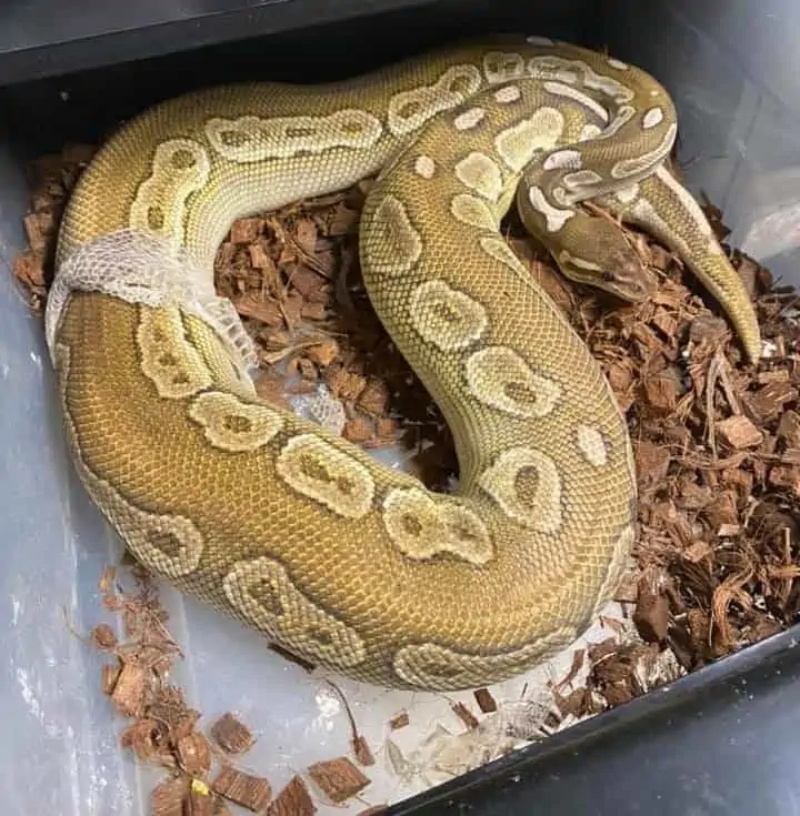
Why Do Ball Pythons Shed Their Skin?
Shedding is a natural process that all snakes go through to remove their old, worn-out skin and replace it with a new, fresh one. This allows them to grow, heal wounds, get rid of parasites, and maintain a healthy appearance.
Unlike humans and other animals that shed their skin cells gradually and continuously, snakes shed their entire outer layer of skin in one piece. This is because their skin is made of scales that are connected by thin membranes. The scales protect the snake from dehydration, infection, and injury, but they also limit the snake’s ability to stretch and expand.
As the snake grows or gains or loses weight, its skin becomes too tight or too loose for its body. To accommodate this change, the snake needs to shed its old skin and reveal a new one that fits better. The new skin is also brighter and more colorful than the old one, which may fade or dull over time.
How Often Do Ball Pythons Shed Their Skin?
The frequency of shedding depends on several factors, such as the snake’s age, size, health, diet, and environment. Generally speaking, younger snakes shed more often than older ones because they grow faster. Adult ball pythons usually shed every 4 to 6 weeks, while juveniles may shed every 2 to 4 weeks.
Shedding can also be influenced by external factors such as temperature, humidity, lighting, stress, and breeding. For example, ball pythons may shed more often in warmer or more humid conditions because they lose more water through their skin. They may also shed more often during or after breeding season because of hormonal changes or physical activity.
There is no fixed schedule for shedding, so you should not worry if your ball python sheds more or less frequently than usual. As long as your snake is healthy and active, shedding is a normal part of its life cycle.
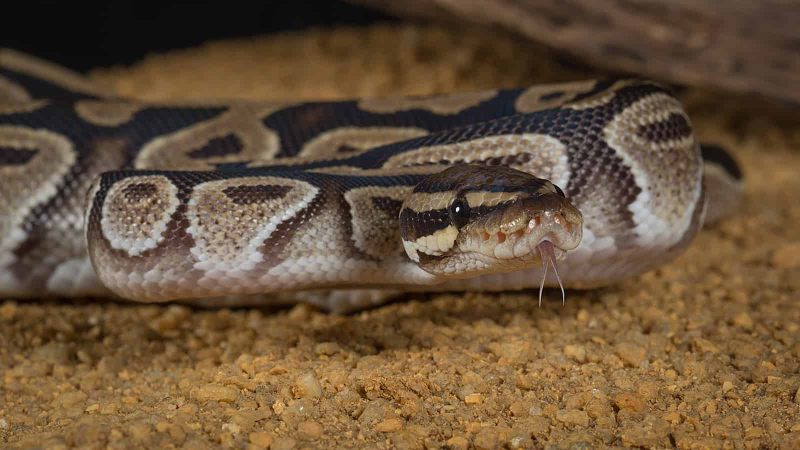
How Can You Tell When Your Ball Python Is About to Shed?
The shedding process unfolds in a relatively predictable fashion. You can usually tell when your ball python is about to shed by observing its behavior and appearance.
The first thing you may notice is that your snake’s skin starts to look duller than normal and its eyes may begin to look blue or cloudy. This is caused by a layer of fluid that builds up between your snake’s outermost layer of skin (the epidermis) and the one immediately beneath it (the dermis). This fluid helps lubricate the old skin and make it easier to slide off.
This stage in the process is called pre-shed or in the blue, and it normally lasts for about 5 to 7 days, but it can vary depending on the individual snake. During this time period, your ball python may be more secretive than normal and hide in its enclosure. It may also refuse food during this time and be more defensive or nervous than usual. This is because its vision is impaired by the fluid in its eyes and it feels vulnerable.
As shedding time approaches, you will typically notice that your snake’s eyes (and to a lesser extent its body skin) will clear up a bit. This means that the fluid has been reabsorbed and the old skin is ready to come off. This stage is called clear or window and it usually lasts for a day or two .
A day or two later, you will likely start to see your snake crawling around the enclosure more actively . You may also notice that it is rubbing its nose on things in the habitat, such as the substrate, the hide, or the water bowl . It is doing this to help cut the old skin near its lips, which will allow the shedding process to commence.
Once the old skin on its face begins to peel away, your snake will begin crawling out of the old skin . It may weave its body through any climbing branches, rocks, or other objects present to help create the friction necessary to facilitate the process. The process may take as little as 10 minutes or as long as several hours, depending on the size and condition of your snake.
Once the snake has completed the shedding process, it will leave behind a complete skin that looks like a transparent replica of your snake . You should remove this skin from the enclosure as soon as possible to prevent mold or bacteria growth. You should also check your snake’s body for any signs of incomplete shedding or injury.
After shedding, your snake will typically regain its appetite and normal demeanor . Additionally, its coloration will normally appear very bright and bold, especially if it has a morph that enhances its natural hues.
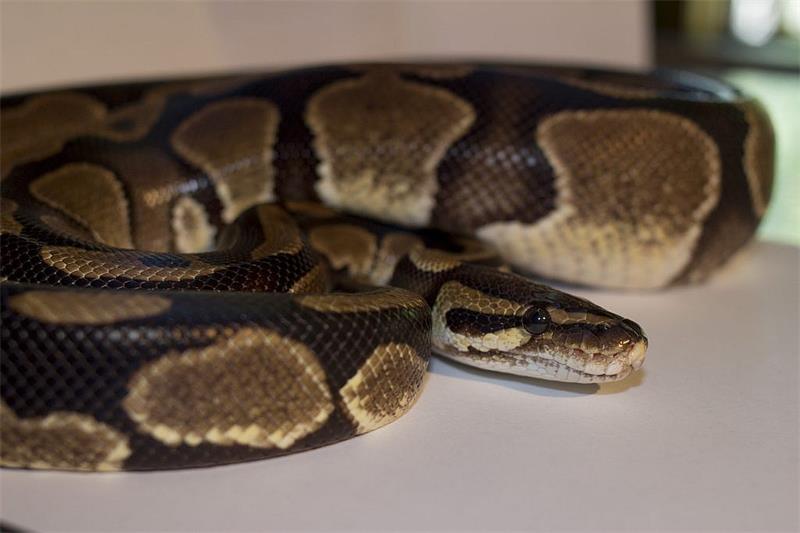
How Can You Help Your Ball Python Have a Successful Shed?
Shedding is a natural process that your ball python can handle on its own, but there are some things you can do to help it have a smooth and stress-free shed.
The most important thing you can do is to provide proper humidity in your snake’s enclosure. Humidity is the amount of moisture in the air, and it affects how well your snake’s skin can detach from its body. If the humidity is too low, your snake’s skin may dry out and stick to its body, making it harder to shed. If the humidity is too high, your snake’s skin may become too soft and tear easily, leaving patches of old skin behind.
The ideal humidity level for ball pythons is between 50% and 60%, but you may need to increase it slightly during shedding time. You can measure the humidity in your enclosure with a hygrometer, which is a device that shows the percentage of moisture in the air. You can also use a digital thermometer that has a built-in hygrometer.
There are several ways to increase or maintain the humidity in your enclosure, such as:
- Using a substrate that retains moisture well, such as coconut fiber, cypress mulch, or sphagnum moss.
- Misting the enclosure with water once or twice a day using a spray bottle.
- Providing a large water bowl that your snake can soak in if it wants to.
- Covering part of the screen lid with plastic wrap or aluminum foil to reduce evaporation.
- Adding live plants or artificial vines that can help retain moisture and create hiding spots.
- Using a humidifier or vaporizer near the enclosure (but not inside it) to add moisture to the air.
You should also monitor the temperature in your enclosure, as it affects how well your snake can regulate its body heat and metabolism. The ideal temperature range for ball pythons is between 75°F and 85°F (24°C and 29°C), with a basking spot of 90°F (32°C). You can measure the temperature in your enclosure with a digital thermometer or an infrared thermometer gun.
You can provide heat sources for your snake, such as:
- A heat lamp that emits visible light or infrared radiation.
- A ceramic heat emitter that emits only infrared radiation and no light.
- A heat mat that emits heat from below through the substrate.
- A radiant heat panel that emits heat from above without light.
You should always use a thermostat to regulate the temperature of your heat sources and prevent overheating or burning your snake. You should also provide a temperature gradient in your enclosure, meaning that one side is warmer than the other. This allows your snake to choose where it feels comfortable and adjust its body temperature accordingly.
Another thing you can do to help your ball python shed is to provide enrichment in its enclosure. Enrichment is anything that stimulates your snake’s natural behaviors and instincts, such as exploring, hiding, climbing, hunting, etc. Enrichment can also help your snake shed by providing objects that it can rub against to remove its old skin.
Some examples of enrichment items for your ball python are:
- Hides that offer security and privacy, such as cardboard boxes, plastic containers, or cork bark tubes.
- Branches, rocks, or driftwood that offer climbing and basking opportunities, as well as friction for shedding.
- Fake plants or vines that offer cover and visual appeal, as well as humidity retention.
- Toys or prey items that offer stimulation and challenge, such as plastic balls, stuffed animals, or frozen-thawed rodents.
You should also avoid handling your ball python during the shedding process, unless absolutely necessary. Handling can stress your snake and interfere with its shedding. It can also injure your snake if you accidentally pull or tear its skin. You should wait until your snake has completed its shed and returned to its normal behavior before handling it again.
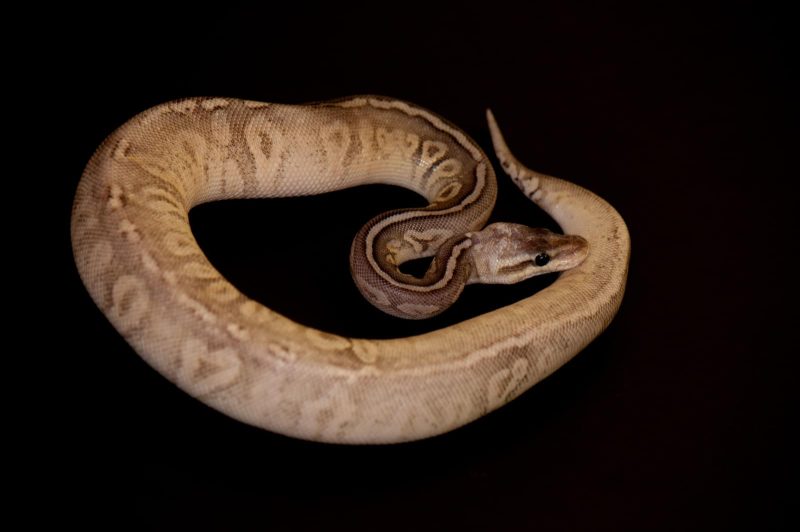
What Are Some Common Shedding Problems and How Can You Solve Them?
Sometimes, the shedding process does not go smoothly for your ball python. There are some common problems that can occur, such as:
- Incomplete sheds. This is when your snake sheds its skin in pieces rather than in one piece. This can leave patches of old skin on your snake’s body, especially on its tail, head, or eyes. This can cause irritation, infection, or vision impairment for your snake.
- Retained eye caps. This is when your snake fails to shed the clear scales that cover its eyes, called spectacles. This can make your snake’s eyes look cloudy or milky even after shedding. This can also cause irritation, infection, or vision impairment for your snake.
- Stuck skin on the tail. This is when your snake fails to shed the skin on the tip of its tail. This can make your snake’s tail look dry, cracked, or constricted. This can also cause circulation problems, tissue damage, or necrosis (death) of the tail tip.
These problems are usually caused by low humidity, dehydration, poor nutrition, stress, injury, or illness. To prevent these problems, you should follow the tips we mentioned above to provide proper humidity, temperature, enrichment, and care for your ball python.
If you notice any of these problems on your ball python after shedding, you should try to help your snake remove the stuck skin as soon as possible. Do not try to peel or pull the skin off by force, as this can hurt your snake and damage its new skin. Instead, you should try one of these methods:
- Humidity chamber. This is a container that has a warm and moist environment that can help soften and loosen the stuck skin. You can make a humidity chamber with a plastic tub or box that has air holes on the lid. You can fill the bottom of the tub with wet paper towels, sphagnum moss, or a warm damp cloth. You can also add a heat source under or near the tub to keep it warm (but not too hot). You can place your snake inside the tub and cover it with a cloth to make it dark and reduce stress. You can leave your snake in the tub for about an hour or until the stuck skin comes off.
- Soaking. This is when you submerge your snake in warm water that can help soften and loosen the stuck skin. You can use a large bowl or tub that has enough water to cover your snake’s body but not its head. You can add some salt or betadine to the water to help prevent infection. You can place your snake in the water and gently massage its body to help remove the stuck skin. You can leave your snake in the water for about 15 to 30 minutes or until the stuck skin comes off.
- Rubbing. This is when you use a soft cloth or towel to gently rub your snake’s body to help remove the stuck skin. You can wet the cloth or towel with warm water to make it more effective. You can hold your snake in one hand and rub its body with the other hand in a downward motion from head to tail. You can repeat this process until the stuck skin comes off.
After using any of these methods, you should check your snake’s body for any remaining stuck skin and repeat if necessary. You should also dry your snake thoroughly and return it to its enclosure. You should monitor your snake’s condition and behavior for any signs of infection or discomfort.
If these methods do not work or if your snake has severe shedding problems, you should consult a veterinarian who specializes in reptiles as soon as possible. Your vet may be able to remove the stuck skin safely and prescribe medication or treatment for any underlying issues.
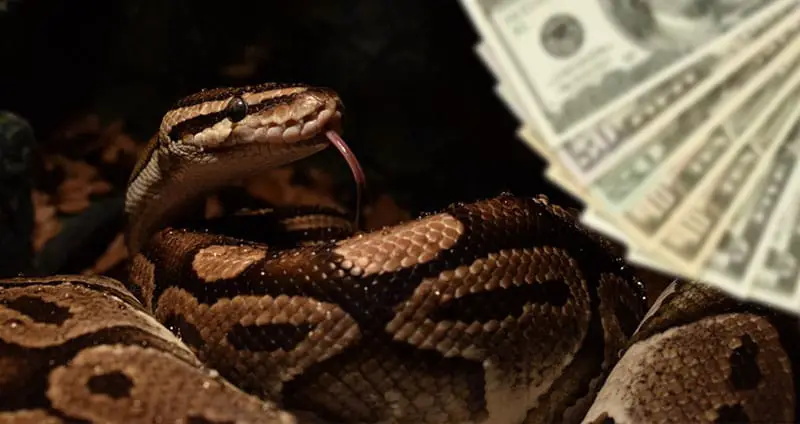
Conclusion
Shedding is a natural and normal process for ball pythons that allows them to grow and renew their outer layer of skin. Shedding usually occurs every 4 to 6 weeks for adults and every 2 to 4 weeks for juveniles, but it can vary depending on several factors. You can tell when your ball python is about to shed by observing its behavior and appearance, which will change during the different stages of the process.
You can help your ball python have a successful shed by providing proper humidity, temperature, enrichment, and care in its enclosure. You should also avoid handling your ball python during the shedding process and wait until it has completed its shed and returned to its normal behavior before handling it again.
Sometimes, your ball python may have shedding problems, such as incomplete sheds, retained eye caps, or stuck skin on the tail. These problems are usually caused by low humidity, dehydration, poor nutrition, stress, injury, or illness. To solve these problems, you should try to help your ball python remove the stuck skin as soon as possible using one of the methods we mentioned above. If these methods do not work or if your ball python has severe shedding problems, you should consult a veterinarian who specializes in reptiles as soon as possible.
We hope this article has helped you understand everything you need to know about ball python shedding. By following these tips and guidelines, you can ensure that your ball python has a smooth and stress-free shed and maintain its health and beauty.



